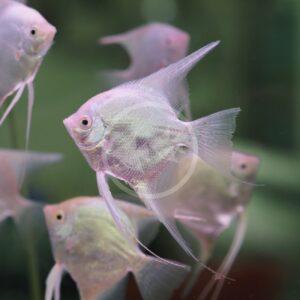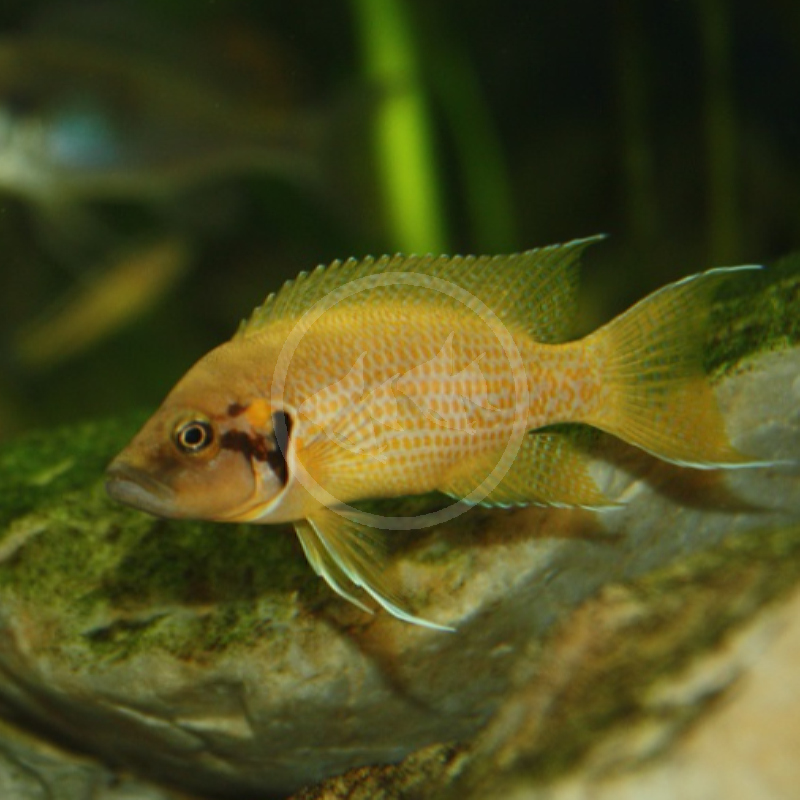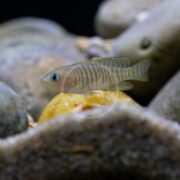
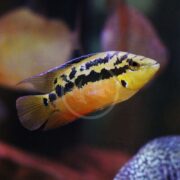
CICHLID – SUNFLOWER / HELIANTHUS
Neolamprologus helianthus
$19.99 – $29.99Price range: $19.99 through $29.99
The Sunflower Cichlid, also known as the Helianthus Cichlid or Sunflower Lamprologus, are endemic to rocky rubble areas of Kamakonde in the southern portion of Lake Tanganyika in Africa. One of the more aggressive in the genus, Sunflower cichlids have an overall bright yellow-orange color as adults with a dark gill plate pattern. These characters taken together can separate this species from the other seven, including the very common Brichardi (Neolamprologus brichardi), that are included in the “Brichardi complex.” Sunflower cichlids are best kept as a male-female pair, though most specimens are sold at a young age where distinguishing sex is difficult. If interested in maintaining the integrity of your Sunflower cichlid gene pool, avoid mixing this species with any other brichardi species (N. brichardi, crassus, falcicula, gracilis, pulcher, savoryi, and splendens) to prevent hybridization. An adult Sunflower cichlid will grow to approximately 3-1/4″, with females averaging slightly smaller than males. Note: This species is not frequently available.
Care Level: Easy
Temperament: Semi-Aggressive
Live Plant Safe: With Caution
General Description: The Sunflower Cichlid, also known as the Helianthus Cichlid or Sunflower Lamprologus, are endemic to rocky rubble areas of Kamakonde in the southern portion of Lake Tanganyika in Africa. One of the more aggressive in the genus, Sunflower cichlids have an overall bright yellow-orange color as adults with a dark gill plate pattern. These characters taken together can separate this species from the other seven, including the very common Brichardi (Neolamprologus brichardi), that are included in the “Brichardi complex.” Sunflower cichlids are best kept as a male-female pair, though most specimens are sold at a young age where distinguishing sex is difficult. If interested in maintaining the integrity of your Sunflower cichlid gene pool, avoid mixing this species with any other brichardi species (N. brichardi, crassus, falcicula, gracilis, pulcher, savoryi, and splendens) to prevent hybridization. An adult Sunflower cichlid will grow to approximately 3-1/4″, with females averaging slightly smaller than males. Note: This species is not frequently available.
Diet Requirements: A diet made up of various high quality protein and vegetable based foods are ideal. Such options include frozen brine shrimp and blood worms, and foods containing Spirulina algae are a plus. Sunflower cichlids will accept sinking pellet foods and flake foods as a staple, but these should not make up the majority of their diet. Variety is the spice of life in order to maintain color, immune function and longevity of your fish.
Care Requirements: An established minimum 30 gallon aquarium is ideal for a pair of Sunflower cichlids. This cichlid cannot be put into a biologically immature aquarium. Bieekly water changes are encouraged to keep water parameters ideal (Nitrates < 15 ppm). The aquarium should have a finer substrate, driftwood and rocks for this cichlid to feel at home. Many areas of stacked rocks in the aquarium will create hiding spaces and caves to encourage more outgoing behavior and disperse aggression. African cichlid specific substrates, or even marine Aragonite substrate, are great choices because they will buffer the pH and alkalinity to levels characteristic of Lake Tanganyika that is needed for this species to thrive and spawn, if desired. Sunflower cichlids are compatible with other like Tanganyikan cichlid species, particularly Cyprichromis and shell dwellers. There may be some territorial disputes with Altolamprologus and Julidochromis if the aquarium is not large enough. Recommended water conditions, 72-82° F, KH 8-25, pH 7.5-9.0.
Purchase Size: Small: 1-1/2” to 1-3/4”, Medium: 2” to 2-1/4”
Note: Your item may not look identical to the image provided due to variation within species. Purchase sizes are approximate.
Dry goods orders are shipped via US Postal Service or UPS to the address provided at checkout based on the selection made in your website shopping cart. Product is carefully packed to help prevent any damage during shipping. Once processed you will receive a shipment notification via email with tracking number, and delivery notification. Please allow 48 hours for processing after your order is placed.
Perishable items (i.e. live plants, refrigerated/frozen foods) are shipped via US Postal Service 2-3 day to the address provided at checkout for a $25.00 flat rate charge. Items are packed with secure packing material and heat, cold, or Cryo packs as needed to maintain safe temperatures during transit. If one or more perishable items are in the shopping cart at checkout the $25.00 perishable shipping charge will automatically appear and need to be selected. Once processed you will receive a shipment notification via email with tracking number. Please allow 48 hours for processing after your order is placed.
Livestock (i.e. fish, invertebrates, coral) are shipped via UPS Overnight to the address provided at checkout for a $55.00 flat rate charge. Livestock is packed in insulated styrofoam boxes with secure packing material and heat, cold, or Cryo packs as needed to maintain safe temperatures during transit. If one or more livestock items are in the shopping cart at checkout the $55.00 livestock shipping charge will automatically appear and need to be selected. Livestock is shipped Monday through Wednesday ONLY (no weekend delivery is available) weather permitting, and we reserve the right to delay shipping until conditions are appropriate for safe arrival. Once your order is placed we will contact you to arrange the best shipping date based on these criteria. Someone must be available to receive the livestock order on the first delivery attempt. Once processed you will receive a shipment notification via email with tracking number. Please allow 48 hours for processing after your order is placed.
For mixed dry goods/perishable & livestock orders items will be shipped via their corresponding shipping methods outlined above. Dry goods will be shipped via US Postal Service or UPS based on your selection and checkout, while livestock will ship via UPS Overnight for a $55.00 flat rate charge. You will receive separate notifications and tracking numbers for the dry goods and livestock. Please note due to different carriers and shipping methods dry goods and livestock may arrive on different days.
Related products
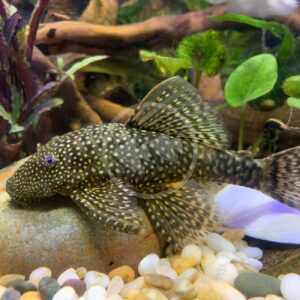
PLECOSTOMUS – BRISTLENOSE / BUSHYNOSE
Ancistrus sp.
$5.99 – $49.99Price range: $5.99 through $49.99
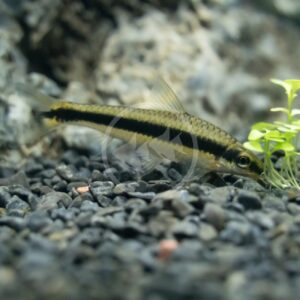
ALGAE EATER – SIAMESE / SAE
Crossocheilus oblongus
$7.99 – $24.99Price range: $7.99 through $24.99
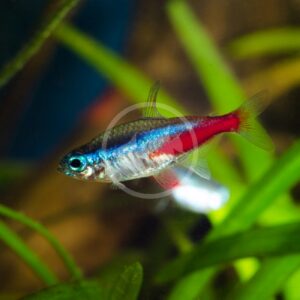
TETRA – NEON
Paracheirodon innesi
$6.99
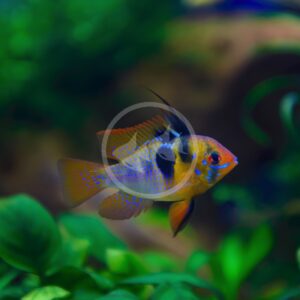
CICHLID – RAM GERMAN BLUE
Mikrogeophagus ramirezi
$12.99 – $24.99Price range: $12.99 through $24.99
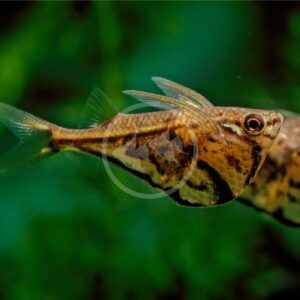
TETRA – HATCHETFISH MARBLE
Carnegiella strigata
$9.99
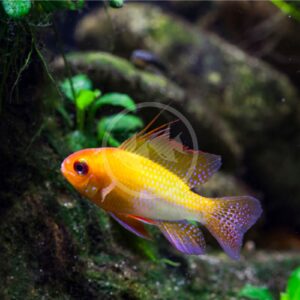
CICHLID – RAM GERMAN GOLD
Mikrogeophagus ramirezi
$5.99 – $26.99Price range: $5.99 through $26.99

AXOLOTL – WILD TYPE
Ambystoma mexicanum
$59.99 – $89.99Price range: $59.99 through $89.99
